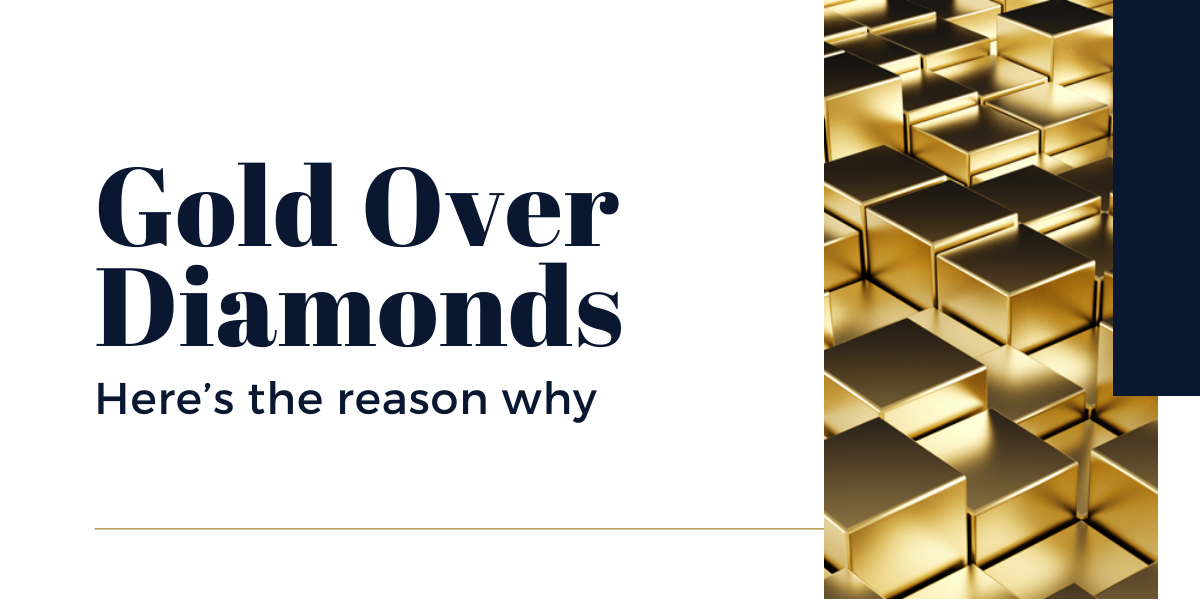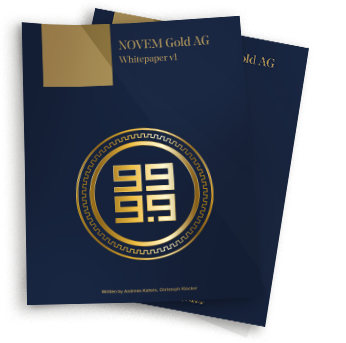
Gold and diamonds are recognized globally as symbols of status and luxury. Diamonds have the reputation of being the ultimate jewelry to wear. Gold is also a constant fixture in the luxury jewelry industry, but has a much different standing when compared to diamonds.
Jean-Marc Lieberherr, CEO of the Diamond Producers Association, aptly summarizes the different market roles of these two minerals as follows:
“People buy diamonds as a celebration and a symbol of love and luxury. It is not a traded commodity like gold and probably never will be because every diamond is unique. You cannot compare gold with diamonds like you cannot compare gold with a branded luxury item.”
Lieberherr made these comments as part of an effort to market diamonds to the Indian market. In his estimation, gold has a strong head start in this market, as is typical worldwide. Part of this disparity is because of just how rare diamonds are.
Diamonds are not actually metals but instead rare earth minerals. The two have an elevated status among other assets, but their positions as investments is the subject matter of this article.
Gold and Diamonds as Investments
Gold has been around since the earliest human civilizations. Its status has remained consistent through time, despite periodic fluctuations in value.
Even though gold does not have periodic yields like stocks and bonds, it is still a reliable investment, especially during times of higher inflation. Investors like Ray Dalio own gold as part of their portfolio to hedge against stock slides.
You have probably seen a female celebrity on the media flaunting an expensive shiny diamond engagement ring. Even though both gold and diamonds are prominent in the jewelry industry, diamonds have the extra sparkle.
Diamonds have grown in importance over the years, and many are wondering whether it is in a position to challenge gold as the premier luxury asset. From the perspective of a pure asset class, gold has some advantages over diamonds.
What Gives Gold its Edge
1. Liquidity
Gold has better liquidity than diamonds. Yes, gold is still scarce enough to have intrinsic value and is less liquid than several other commodities. However, the fact that you can sell gold anywhere in the world at a standard price makes it a better investment. Central banks across the globe have gold reserves, giving it a legitimacy that diamonds simply don’t have.
Moreover, the fact that in early civilizations – and even right up to the development of paper currency – monarchs issued gold coins as currency gave the yellow metal unparalleled recognition. Countries have since stored a sizeable amount of gold reserves as a measure of wealth.
2. Unique Make-Up
Gold is a unique element on the periodic table most of us learned in high school. Meanwhile, diamonds are a compound that scientists can produce in the lab, albeit with lower quality than mined diamonds.
Soon, it could be possible to have the technological expertise to limit the difference. This advancement allows for the creation of quality diamonds synthetically. Gold will remain a standard metal through time. Whether you melt into a different shape or not, a given quantity of gold remains valuable as opposed to diamonds.
3. Standard Price
Across the world, the price for an ounce of gold is standard and objective. This standard gives you an awareness of the value of your gold holdings in current markets.
Diamond prices are more subjective because of the unique nature of this mineral. To sell your diamonds, the jeweler has to examine factors like its cut and clarity.
For gold, once the buyer has confirmed its purity, the price is standard, or at least within a standard range when transacting with legitimate dealers. The standard is in part because of gold’s reputation over millennia of use as a currency and asset.
Diamonds only became a significant asset in the 20th century. Colored diamonds had a history among European royals, but not enough to develop the supply-demand dynamics gold has. Industry professionals have set diamond prices since 1978.
They update the prices weekly, and diamond stakeholders have to watch the trends carefully. This bureaucracy makes diamond prices more difficult to understand and rely on. Gold prices are real-time and depend on market and exchange rate fluctuations.
4. Behavior During Economic Turmoil
Gold has really distinguished itself in the last two decades as a hedge against economic, political and currency crises, as well as overall market declines.
During the financial crisis of 2008, gold went close to the $2,000 an ounce mark at the height of the crisis. This trait makes gold a perfect hedge asset for investors eager to diversify against shocks in the stock market.
High cut diamonds have intrinsic value as well. This fact means that they also have resale value and can act as reserve value. However, the behavior of this asset in times of crisis is not clear cut.
As far as an anti-crisis asset goes gold is head and shoulders above any other asset in the market. Gold is better insurance for tough times because investors take their money there during times of crisis.
The fact that diamonds are more of a luxury commodity than a tradable asset makes them more complicated as a hedge asset. During times of extreme crisis, ordinary people tend to be conservative in their spending, and such luxury commodities can take a hit.
In this sense, one can own diamonds as a complementary diversification asset to gold rather than a standalone anti-crisis asset. During times of recovery, diamonds can be a great asset to hold. Both make for tangible investments, with the ability to resist monetary fluctuations, but gold is the far superior hedge asset.
5. The Gold Market is More Sophisticated
Given gold’s liquidity, the gold market is more advanced and diverse. You have several ways of investing in gold without necessarily holding the gold.
Besides gold-backed ETFs, you now have the option of gold-backed tokens on the blockchain. This gives traders a universal utility to trade gold seamlessly without the hassle of storage and transportation.
The diamond industry does not enjoy this level of diversity and ease. Disposing of your gold holdings is way simpler and faster in comparison to diamonds, which undergo far more quality checks.
Therefore, if you are looking at how easy your life is going to be when owning the respective assets, gold is undoubtedly the superior asset.
The Bottom Line
In the past four decades, stocks have proven to be a fantastic way to create wealth. However, as great as this door to financial success is, it can slam shut in your face overnight and lead to catastrophic losses. The dot com bubble and the financial crash of 2008 are the most recent significant reminders of this possibility.
Gradually, precious metals like gold and rare minerals like diamonds have distinguished themselves as alternative assets in the market. The need for investment diversification places such valuable assets at an elevated position. In a time of an historic stock market bull run, these assets are perfect tools for diversification.
Diamonds, especially colored diamonds, have the advantage of extreme scarcity. In this regard, prices will remain high, and possibly go even higher in the next few years.
However, the unique nature of the diamond market makes it that much more challenging to navigate. If you are a high net-worth individual, it could make sense for you to go through the rigors of owning such rare, valuable minerals. However, when looking for an asset with a high resale value to hold and trade for shorter periods, gold has the edge.
Gold is a much more fluid asset. The sophistication of gold markets and objective pricing makes it better for traders. Even more crucial is gold’s established role as the best anti-crisis asset. Therefore, if you are pondering between the two investments, gold has more of an upside as a hedge asset.






